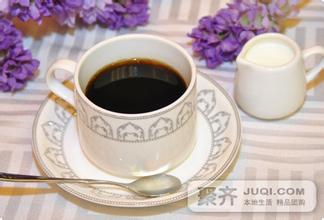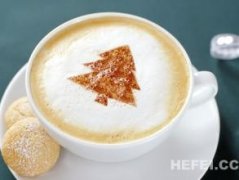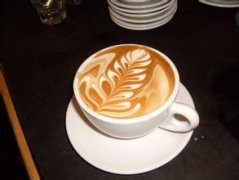A brief introduction to the cultivation of bitter Jamaican coffee, geographical location, climate and altitude

From the above, we can understand the general production of Blue Mountain Coffee. It should be noted that 99.9% of the Blue Mountains that can be drunk in China are only planted near the Blue Mountains. Only coffee produced in 6000 hectares above 1600 meters above sea level can be called Blue Mountain, and the yield is always below 900t, according to the principle of 10% supply to the world outside Japan. Can this kind of coffee, which the world can only consume 90 tons a year, be drunk in any cafe for dozens of yuan?
The best Blue Mountain Coffee is undoubtedly one of the best. Although the price can ensure an adequate supply of Blue Mountain coffee, it does not guarantee the best flavor of the coffee. Also, this kind of coffee tastes much more expensive than it looks. If you want to taste its best flavor, you have to put more coffee beans than other coffee, otherwise the flavor will be a little different, so the flavor is that it has 10% to 15% more coffee beans than the coffee whose price is inferior to it.
The real Blue Mountain Coffee is made from the best local raw coffee beans, which is the fun of tasters. Its flavor is rich, balanced, fruity and sour, and can meet people's various needs. In addition, the flavor of high-quality fresh Blue Mountain coffee is particularly long-lasting, as drinkers say, the annual harvest period of Jamaican Blue Mountain Coffee is from June to November, which is usually picked by hand. after picking, it goes through the process of washing, peeling, fermentation, dehydration, drying, shelling, baking and so on before you can get a ripe blue mountain coffee bean. In the process of raw bean processing, there are special personnel responsible for quality supervision in each step. For the very precious Blue Mountain Coffee, the packing and transportation mode adopted by the Jamaican government is also different. Unlike other coffees, Blue Mountain Coffee is not packed and transported in cloth bags at 60kg / bag, but in wooden barrels at the standard of 70kg / barrel. Jamaica is also the last country to still transport coffee in traditional wooden barrels. Jamaican Blue Mountain coffee beans must obtain a certificate of quality recognition issued by the Jamaican Coffee Industry Committee, which is the only body in Jamaica authorized to issue such a certificate. And each batch of exports will have special quality supervision experts responsible for sampling, baking, grinding and brewing coffee, and finally make a judgment on whether it is up to the standard or not.
Columbus came to Jamaica in 1494, and in 1509 Spain declared Jamaica its colony and renamed it Santiago. Spain imposed a slave policy on the indigenous people, which led to the extinction of the Arawaks on the island as a result of war, disease and slavery. To make up
As a labor force, Spain began to sell slaves from Africa to Jamaica since 1517, causing blacks to gradually become the dominant nation of Jamaica. In 1538, the Spanish founded the Spanish city, and as the capital of Jamaica, in the 150 years after 1692, Jamaica became a world-famous producer of sugar, rum and coffee. [4] in order to maintain a large number of plantations, the Royal Africa Company was established in England in 1672.
After 1865, after another large-scale uprising, Britain declared Jamaica a colony under direct jurisdiction in 1866. At the end of the 19th century, the sugar industry in Jamaica gradually declined and was replaced by banana farming. In 1872, Kingston officially became the capital of Jamaica, located in the northwest of the Caribbean Sea, located at 17.42 degrees north latitude 18.31 degrees, west longitude 76.11 degrees to 78.22 degrees, is an island country. [1] the island of Jamaica is 234km long from east to west and 82km wide from north to south, with a territorial area of 11420 square kilometers, of which the land area is 10991 square kilometers. To the east across the Strait of Jamaica, facing Haiti, about 140 kilometers north of Cuba. It is the third largest island in the Caribbean, with a coastline of 1220 kilometers. Jamaica is the third largest in the West Indies after Cuba and Haiti and Jamaica is a constitutional representative monarchy. On August 6, 1962, the current Constitution entered into force. The head of state of Jamaica is the Queen of England, and the Governor of Jamaica is appointed by the Queen after being recommended by the Prime Minister to the Queen. In accordance with the provisions of the Jamaican Constitution, the Governor appoints the Majority Leader of the House of Representatives as the Prime Minister of the Government and appoints Cabinet Ministers on the basis of the Prime Minister's nomination. The Jamaican Parliament is composed of the Senate and the House of Representatives, which are appointed and elected. The Jamaican Labor Party and the people's National Party have been in power for a long time, and the political situation is stable, but social problems such as unemployment, poverty, drug trafficking and violent crimes are prominent. On March 3rd, Andrew Holnis was sworn in as the new Prime Minister (1) Jamaica Labour Party (JLP): the ruling party. Founded in July 1943. The Party Constitution stipulates that the party is founded on the basis of "healthy Christian principles" and adheres to the highest ideal of democracy. Objectively, it tends to protect the interests of workers and the weak in society, advocate safeguarding the respective rights of workers and employers and developing the private economy. He was in power from 1962 to 1972, 1980 to 1989, and 2007 to 2011. Party leader Andrew Holnes (Andrew Holness). [14]
(12) people's National Party (People's National Party, referred to as PNP): opposition party. Founded in September 1938 as a member of the Socialist International. In 1940, he declared that he would adhere to the "socialist principles". The program of "Democratic Socialism" was put forward in September 1974. He was in power from 1972 to 1980 and from 1989 to 2007. Party leader Portia Simpson-Miller [15].
(3) New Jamaica Alliance (NJA): opposition party, formed in June 2002 and composed of the National Democratic Movement (NDM), the Republican Party of the teeth (RPJ) and the Union of National Unity of the teeth (JANU). The Jamaican flag was inaugurated on August 6, 1962. The flag is rectangular and the ratio of length to width is 2:1. [2] there are two yellow diagonal broadband lines crossing on the flag, which divides the flag into four triangles, green above and below and black around. Yellow represents the country's natural resources and sunshine, black symbolizes the difficulties that have been overcome and is about to face, and green symbolizes hope and the country's rich agricultural resources.
Important Notice :
前街咖啡 FrontStreet Coffee has moved to new addredd:
FrontStreet Coffee Address: 315,Donghua East Road,GuangZhou
Tel:020 38364473
- Prev

A brief introduction to the transaction Price of the aromatic Jamaican Coffee Variety planting Market
Because Jamaica Blue Mountain is so famous, there are fake Blue Mountain Coffee, or simply Blue Mountain Coffee, which is basically a comprehensive product prepared by the shop. there may not be a single real Jamaican blue mountain bean in it, which was ordered by King Louis XV of France in 1717 to grow coffee in Jamaica, 20 years Blue Mountain Coffee (6) mid-generation.
- Next

A brief introduction to the treatment method of grinding degree and baking degree of unique sour Jamaican coffee
In addition, the processing and production of Blue Mountain Coffee is also very elegant. Strict and detailed standards have been established for processing, baking and packaging, and there are regulations on what kind of organic fertilizers are needed during the growth period. All are harvested manually at harvest time. Jamaica is also the last country to still transport coffee in traditional wooden barrels. Only through this series of harsh standards set by the Jamaican Coffee Industry Authority.
Related
- Detailed explanation of Jadeite planting Land in Panamanian Jadeite Manor introduction to the grading system of Jadeite competitive bidding, Red bid, Green bid and Rose Summer
- Story of Coffee planting in Brenka region of Costa Rica Stonehenge Manor anaerobic heavy honey treatment of flavor mouth
- What's on the barrel of Blue Mountain Coffee beans?
- Can American coffee also pull flowers? How to use hot American style to pull out a good-looking pattern?
- Can you make a cold extract with coffee beans? What is the right proportion for cold-extracted coffee formula?
- Indonesian PWN Gold Mandrine Coffee Origin Features Flavor How to Chong? Mandolin coffee is American.
- A brief introduction to the flavor characteristics of Brazilian yellow bourbon coffee beans
- What is the effect of different water quality on the flavor of cold-extracted coffee? What kind of water is best for brewing coffee?
- Why do you think of Rose Summer whenever you mention Panamanian coffee?
- Introduction to the characteristics of authentic blue mountain coffee bean producing areas? What is the CIB Coffee Authority in Jamaica?

